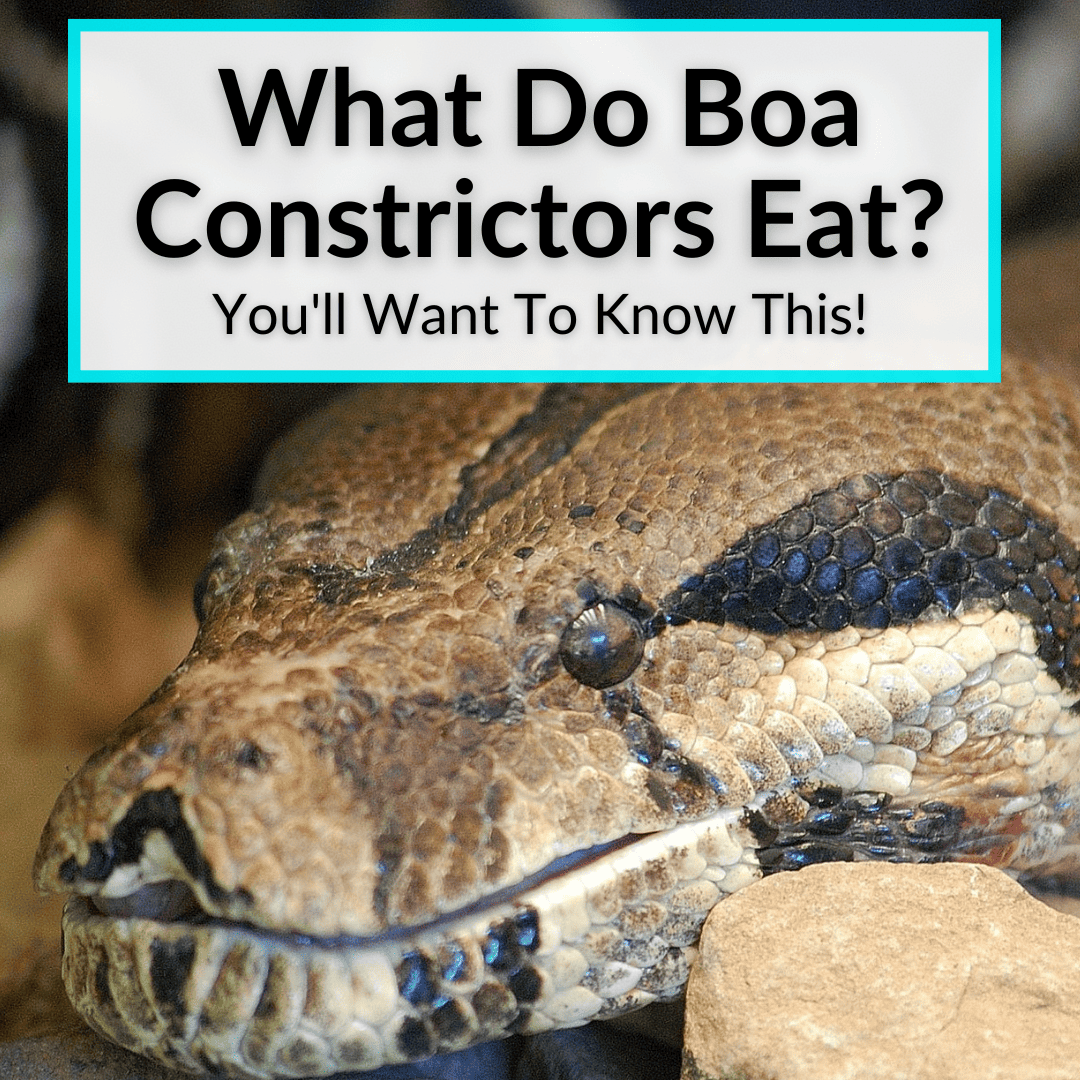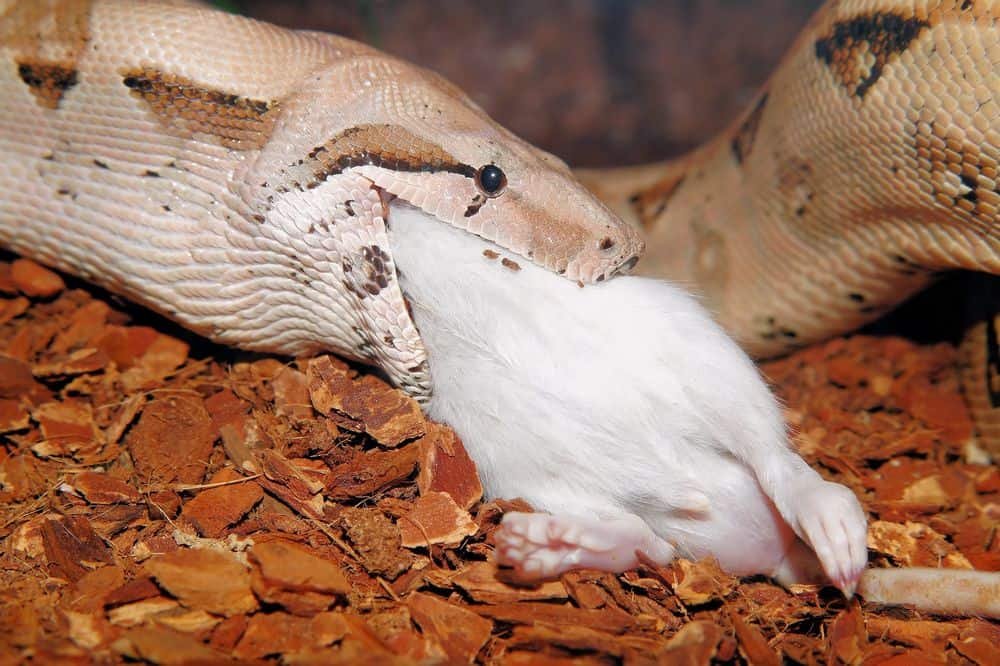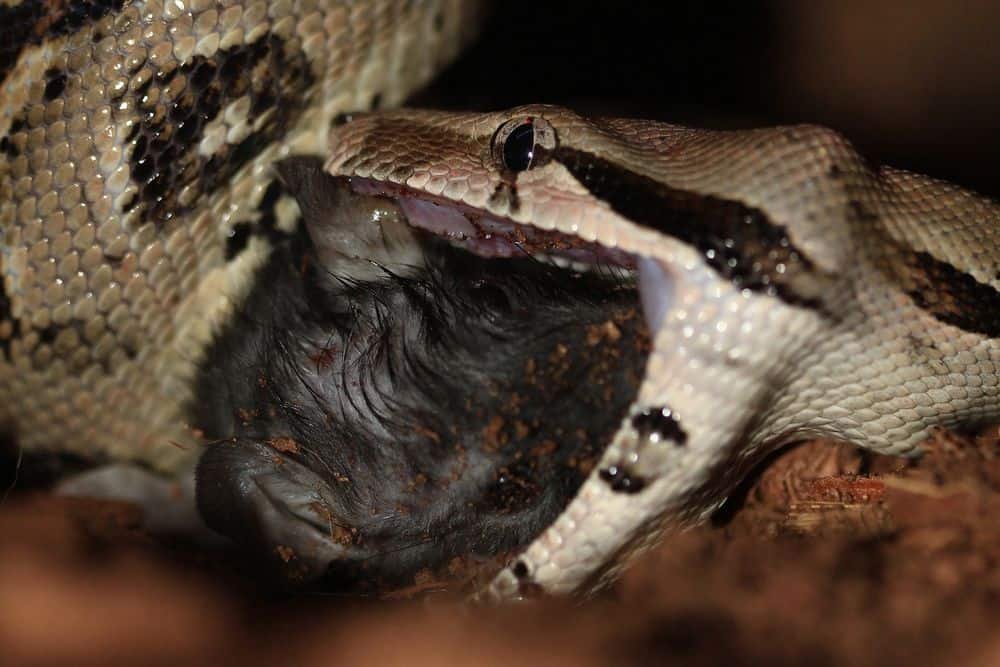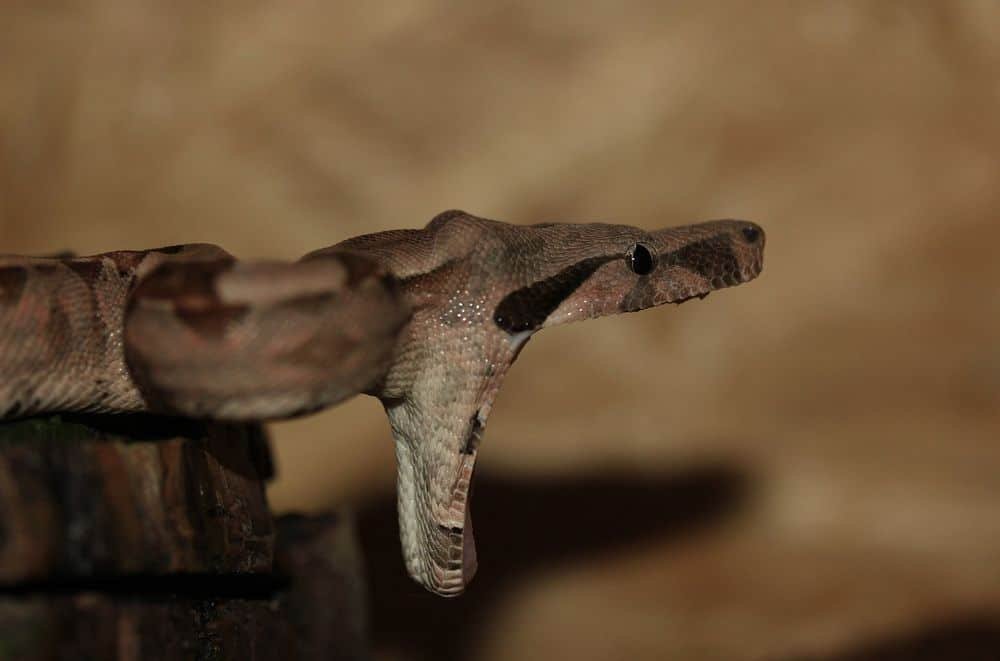
Cornell University herpetologist Harry Greene proved that a medium-sized boa constrictor needs less than five pounds of meat per year to stay in good health.
Why is that so shocking?
Because a pet cat needs at least fifty pounds of flesh a year to stay healthy!
What do boa constrictors eat that they can survive on so little?
Nothing special. They just have have an incredibly slow metabolism.
Keep reading to learn exactly what boa constrictors eat in the wild, and what you should feed a pet boa in captivity.
Table of Contents
- 1 What Do Boa Constrictors Eat?
- 2 What Does A Boa Constrictor Eat: Final Thoughts
What Do Boa Constrictors Eat?
Boa constrictors vary in size. Depending on their calorie needs, they may eat small birds, rodents, lizards, bats, and small mammals like squirrels, opossums, or monkeys.
You can feed your pet boa rabbit meat, chicken or baby chicks, frozen rats, and mice. Let’s dive in and get into much more detail on everything to do with what and how boa constrictors eat, both in the wild and in captivity.
Animals Boa Constrictors Eat

Boa constrictors are snakes found in parts of Central and South America. They live in a variety of habitats, and their diet varies based on their habitat.
Boas are carnivores. They eat exclusively meat. They prefer lizards, birds, bats, rodents like mice or rats, and small mammals like squirrels, rabbits, and opossums.
Here is a list of animals that a wild boa loves to eat.
- Rabbits
- Monkeys
- Small pigs
- Mongoose
- Small-to-medium-sized birds like quails, waterfowl, and ducks
- Bats
- Eggs of various animals and birds
- Reptiles like lizards and other small snakes
- Amphibians, like frogs, toads, salamanders, etc.
- Rodents, like rats, mice, murids, shrews, beavers, opossums, squirrels, hamsters, cavies, etc.
The size of the animals a boa eats will vary based on the snake’s size. As the boa grows in size, it prefers larger prey to meet its calorie needs. After all, boas may eat just once a week or less, so they make every meal count.
How Boas Eat Their Prey

Boas of all types, whether boa constrictor or boa imperator or any other kind of boa, are ambush predators. This means that they use stealth and strategies to capture their prey with an element of surprise.
They use their sense of smell to locate their prey. They do not move fast, so they do not chase their prey.
Once they capture an unsuspecting animal using stealth, they sink their tiny teeth into the prey’s skin, all the while constricting tightly around its body.
They tightly squeeze the prey which asphyxiates it and cuts off its oxygen supply. The boa then swallows the dead prey whole.
Unlike mammalian jaws, which use chewing and bite force to cut through the food, a boa constrictor uses its super-flexible jaw ligaments to open its jaw wide so it can swallow its prey whole.
These ligaments allow the lower jaws to move independently of each other. At the same time, the upper jaw ratchets over the surface of the prey and literally lets the boa “walk” its meal down its throat.
Check out this video of a boa constrictor eating a whole pig!
It takes about a week for a boa to digest its food, depending on the size of the meal.
What To Feed Pet Boa Constrictors
You can feed your pet boa rats or mice. They do not need anything else, including supplements. To make sure the mice or rats are healthy and mite-free, purchase them from a reputable source.
How Often Do Boa Constrictors Eat?
Young boas demand food more frequently than adult boas, so you should feed your baby boa once every 5 to 7 days. If you have a 2-year-old boa weighing between 15 and 33 pounds, feed it an appropriately sized rat (i.e. one about as thick as the snake) once every 10 to 15 days.
The boa constrictor’s feeding rate also depends on its activity levels, so a lethargic boa might only eat once a month.
How To Feed A Pet Boa

You can choose to feed live or frozen food to your boa. If you feed live food, no preparation is needed. Just make sure you find a reliable place to buy the live mice or rats for your snake. If you feed frozen food, then use the following steps:
Thaw The Frozen Food
- Only thaw as much as is needed for one meal. Discard uneaten, thawed food to prevent contamination.
- Place the frozen food on a plate in a warm place. It should thaw quickly.
- You can also place the frozen mice/rat in a plastic bag, and then place the bag in hot water for ten minutes.
- Alternatively, place the frozen food on a plate and run a blow dryer over it to warm it up. Boas like warm food, because it smells stronger and the heat is closer to a live animal.
- Never use a microwave to thaw the mouse or rat, since that can cause the food to explode.
Play With The Food While Feeding It
- Once the food is ready, you may place it in a dish away from your snake’s bedding.
- Alternatively, you can stimulate your boa and get it to move and hunt (like it does in the wild) by dangling its food in front of its mouth.
- If you dangle the food, use forceps or tweezers to do the job. Boas may accidentally bite your hand if they smell the food on you.
- Discard uneaten food to prevent contamination.
When Feeding Live Food
- Remove uneaten live prey from the enclosure; otherwise, they may bite or scratch your boa.
- You can place uneaten live prey in containers and then try feeding it again to your snake after a while.
Follow A Strict Feeding Schedule
Always check the best feeding schedule for your boa, based on its age, size, and activity levels, by consulting an exotic animal vet or a herpetologist. Do not overfeed your snake.
How To Know If Your Boa Is Hungry
It is extremely important to only feed your boa constrictor when it is hungry. If not, the food might rot and go to waste. On the other hand, leaving a boa hungry without feeding it in a timely fashion can make it aggressive and could even lead to sickness in the snake.
So, how can you tell if your boa constrictor is hungry? Here are some tell-tale signs:
- Prowling: A hungry boa will prowl just as it would in the wild when it is hunting for prey. Your boa might become more active and come out of its hiding or nesting areas and prowl in front of the tank.
- Focusing on you: Your boa will also focus on you because it knows you are the one who feeds it. When you come near its enclosure, it might come out of hiding and seem to look at you.
- Flicking its tongue: A hungry boa will flick its tongue frequently. It does this to taste or smell the air to see if there is any prey nearby.
What Happens If A Boa Constrictor Bites You?

Boa constrictors are non-venomous snakes, so their bites are not fatal. However, boa bites can be quite painful, because their sharp teeth can easily scratch, puncture, or pierce through human skin.
A large boa can also easily cause lacerations on human skin and could even cause internal injuries. Boa constrictor bites often take a long time to heal and are especially painful during the healing process. Some people might even need antibiotics to avoid secondary infections.
If you have been bitten by your pet boa, please have the bite examined by a doctor to ensure there is no internal damage.
What Does A Boa Constrictor Eat: Final Thoughts
Boa constrictors eat a large variety of animals, because they inhabit many different habitats. Basically, a boa will eat whatever animal it can get its hands on that is the right size.
One thing they never eat is vegetables, so please do not get a boa constrictor (or any other snake) with the idea of making it vegetarian. It will not eat and it will die. If you get a snake, you need to be comfortable with the idea of feeding it mice or rats. They do not have to be live, but they do need to be whole.
Leave a Reply